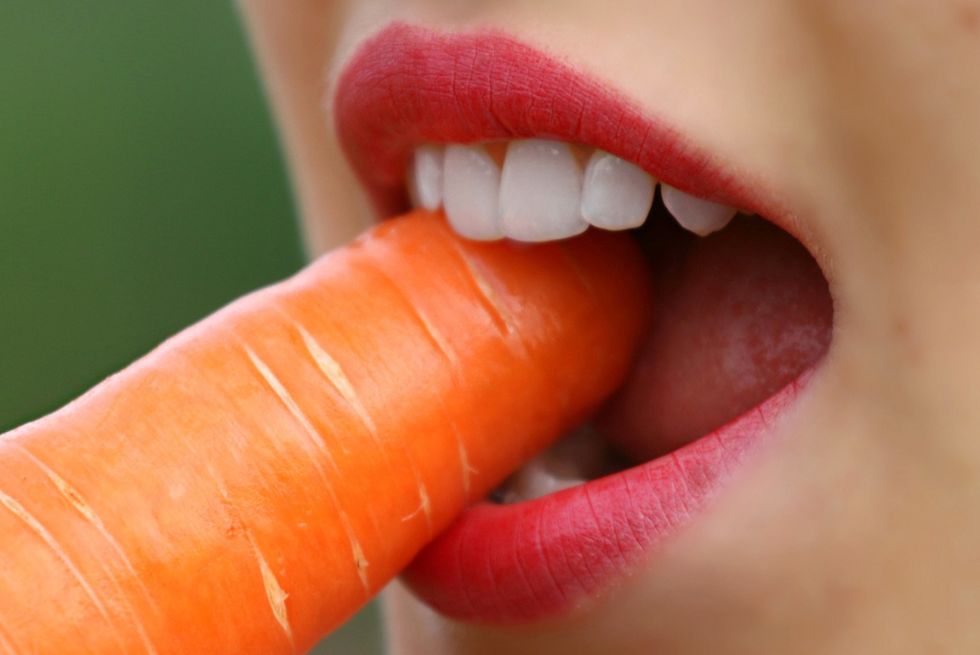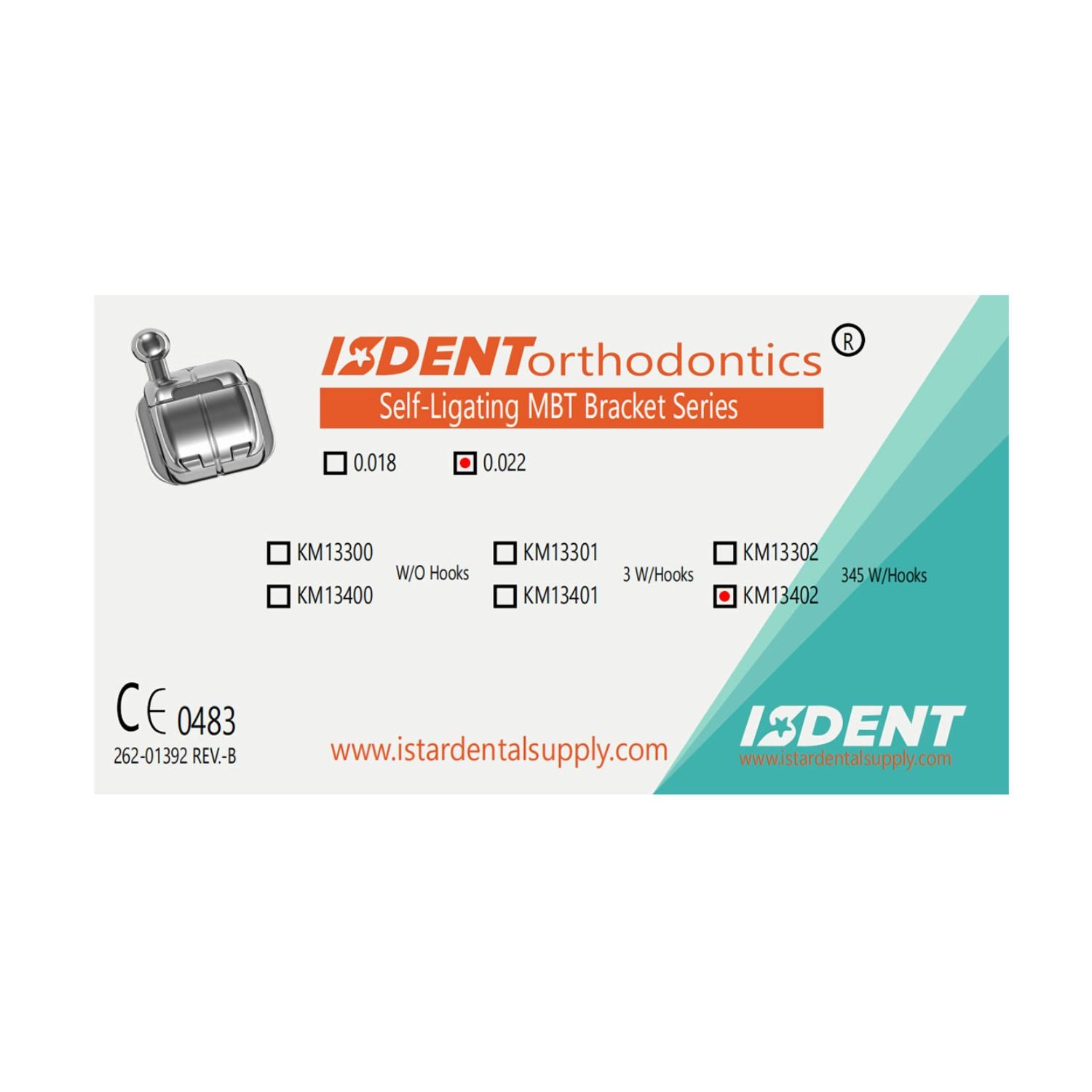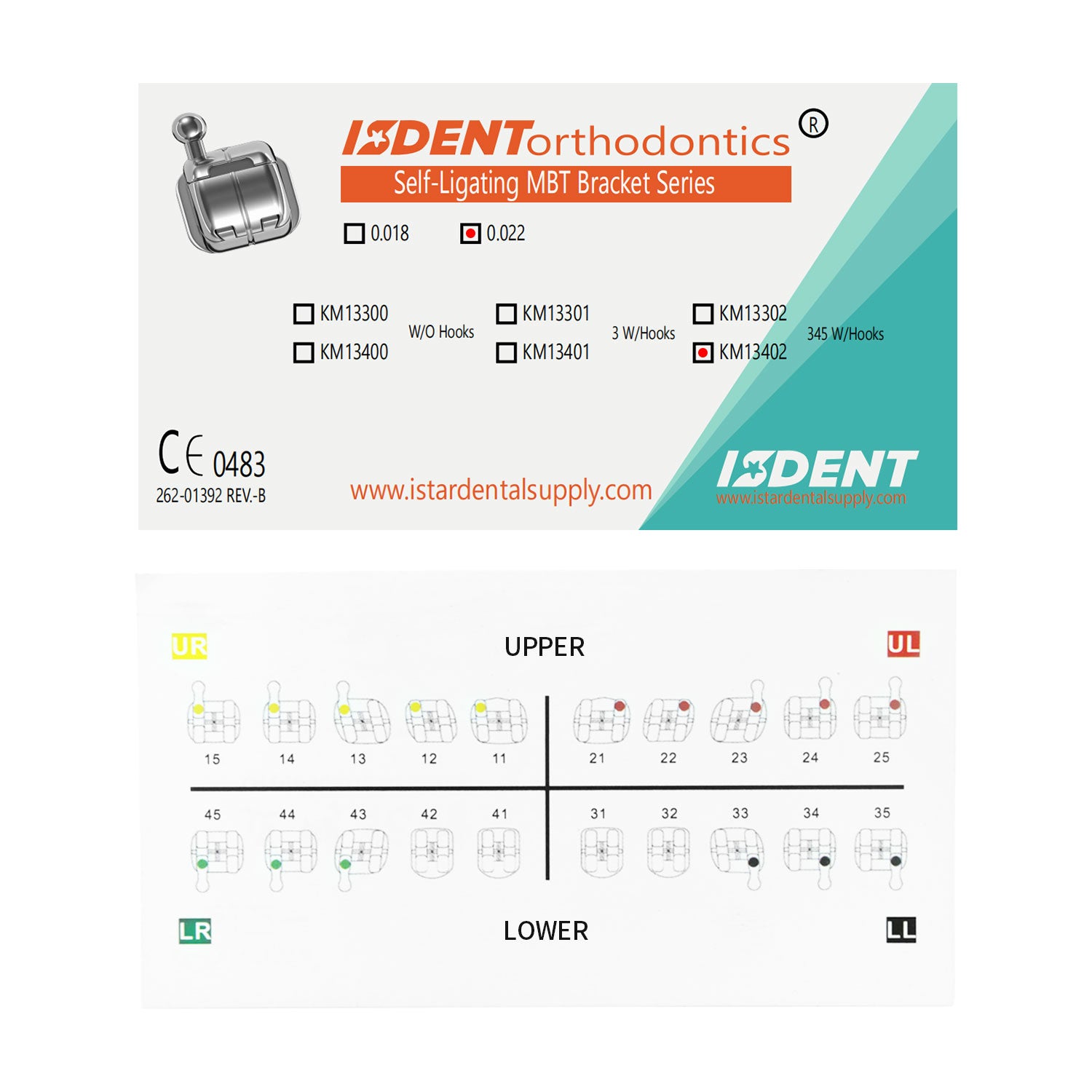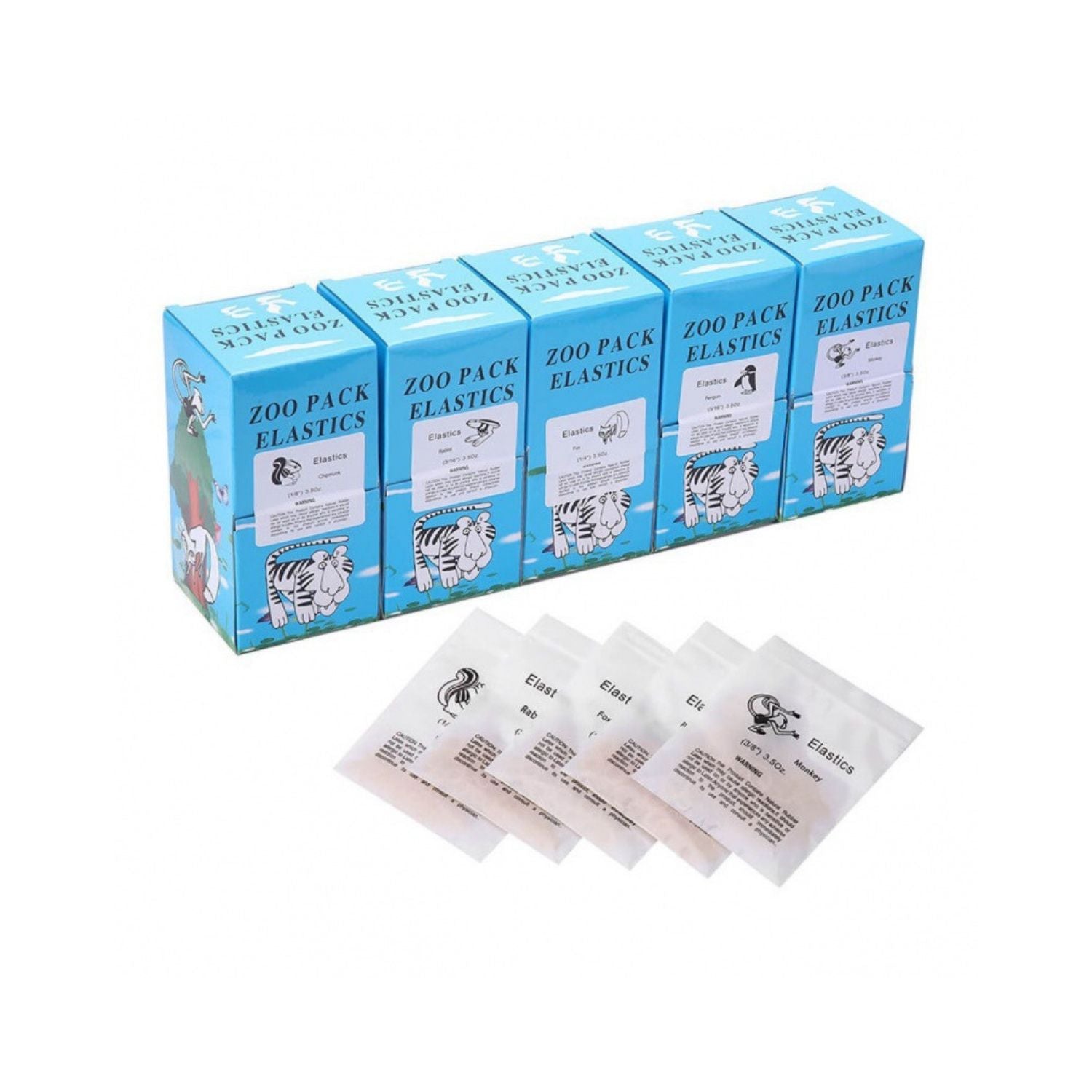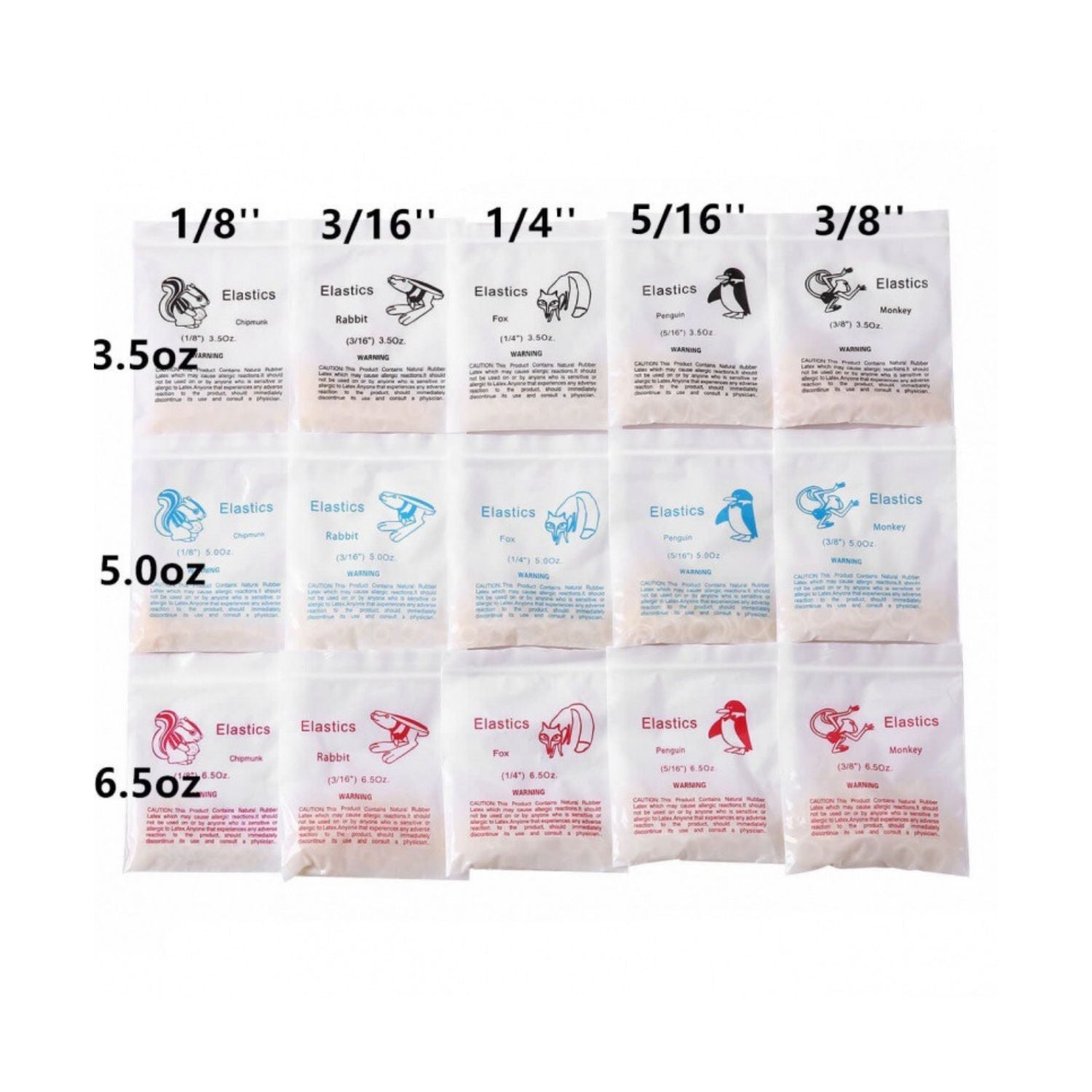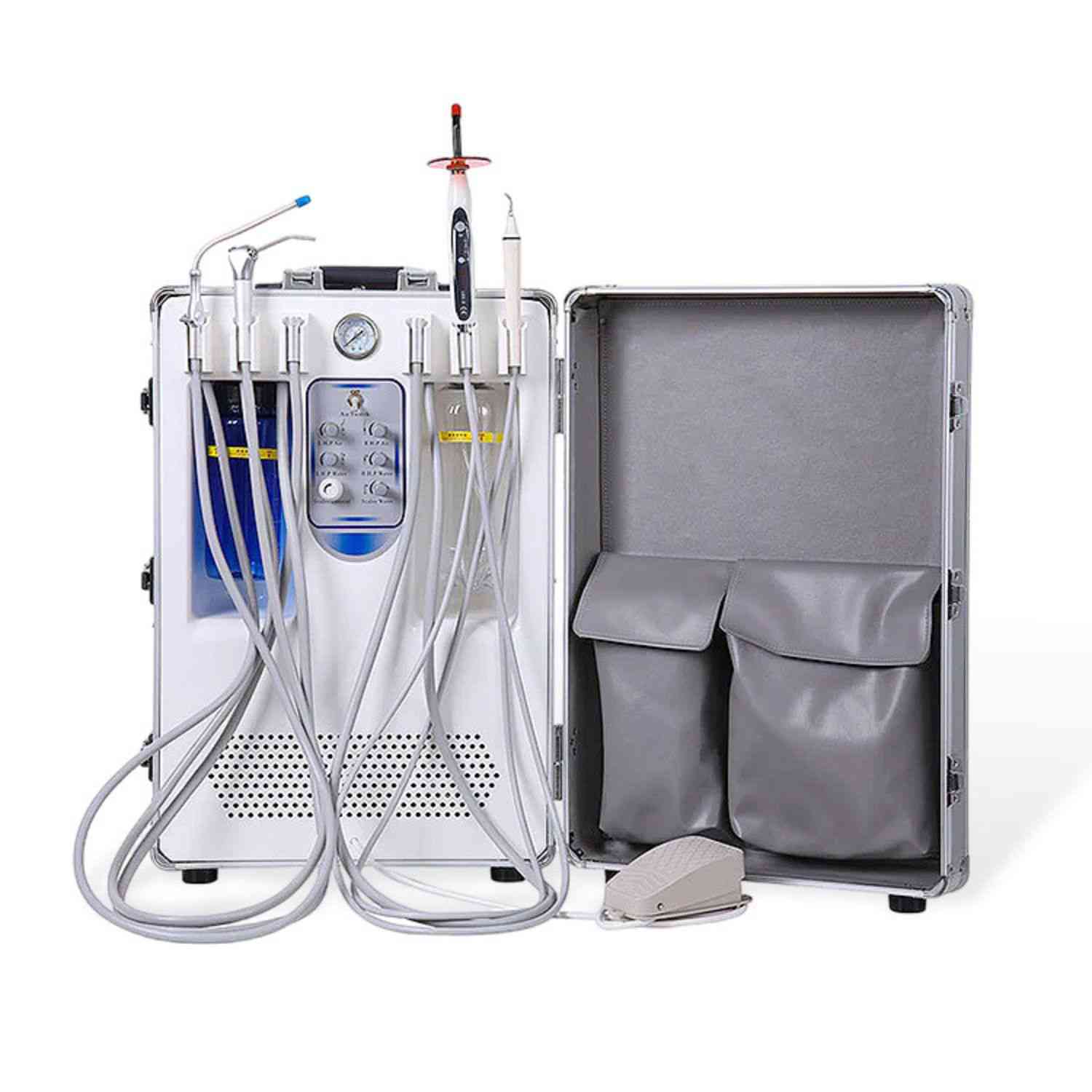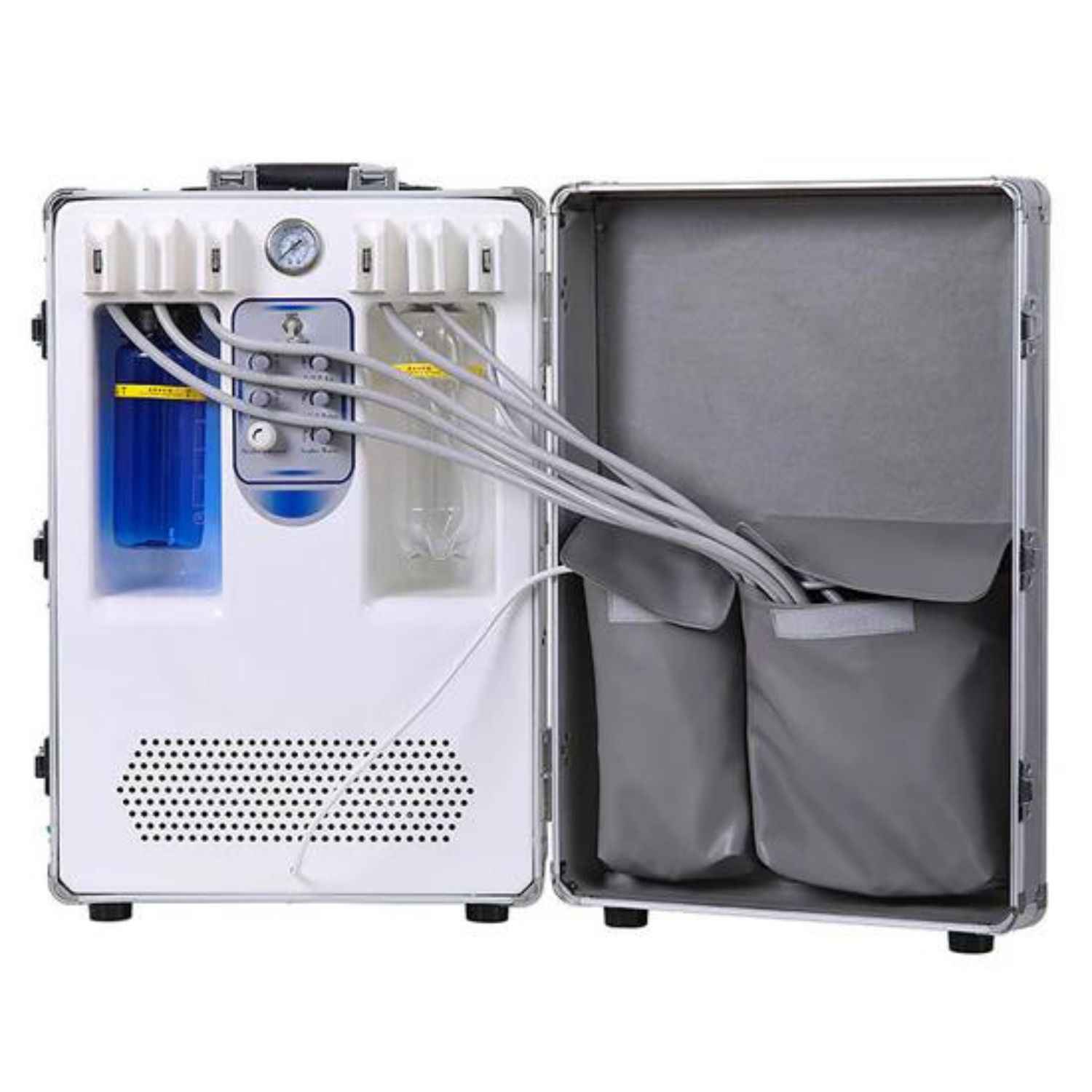Teeth are our indispensable "little companions." With them, we can live a normal life. So, how much do you know about our teeth? This article will help you understand them better from all aspects, including the structure, names, functions of teeth, as well as related diseases, treatments, and maintenance.
What Are Teeth?
Teeth are vital organs that help us tear, chew, and grind our food, and are composed of 70-75% hard minerals and 20-25% pliable organic matter, a structure that ensures that we can tear our food but is not prone to break when subjected to external forces.
The main cost of the minerals is a calcium-containing mineral, hydroxyapatite, which carries the vast majority of the tooth's hardness, while the organic component is mainly collagen. And, of course, inside the tooth is the source of all things, water. The percentage of water in the tooth is 5-10%, which varies from site to site.
The Importance of Teeth
The function of teeth is not just to help us eat better; they also play a crucial role in maintaining our facial appearance and in speech articulation!
Assisting with Eating
The importance of teeth in eating is something you’re likely well aware of. Teeth help cut and grind food into small pieces, making it easier for our stomach to digest and break down the food, allowing our body to absorb the nutrients more efficiently.
Speech Articulation
When you lose teeth, your ability to speak is undoubtedly affected. Speaking requires the coordination of the tongue, lips, and airflow, and teeth play a crucial role in directing that airflow.
Particularly for certain sounds like "f," "s," and "v," the absence of teeth makes it difficult to control the airflow properly, leading to inaccurate pronunciation.
Facial Aesthetics
You might often notice that some elderly people have slightly sagging faces or a less defined jawline, while younger people rarely have these issues. This is not only due to aging and skin sagging but also because of teeth. Teeth are one of the structures that support our facial muscles and maintain facial shape.
You can think of teeth as the framework of an umbrella—when a part of the framework is missing, the umbrella's fabric sags unnaturally, even if the main shaft still supports it.
Social Interactions
This aspect might be the one most people care about the most, as no one wants to show their imperfections to others. Imagine you’re on a date with a gentleman or a lady, and during a joyful conversation, you both burst into laughter. However, your missing teeth become noticeable, making the situation incredibly embarrassing.

Structure of Teeth
Our teeth are composed of seven parts, each with its own unique characteristics:
Enamel
Enamel, also known as the outermost layer of the tooth, is the white to grayish-white semi-translucent substance that is visible to the naked eye. It is primarily composed of hydroxyapatite minerals, which make it the hardest substance in the human body.
Because it protects the inner parts of the tooth, we do not feel discomfort when eating spicy or acidic foods. Although enamel is the hardest armor of our teeth, certain foods or habits can gradually wear it down, such as acidic or sugary foods and drinks, teeth grinding, and oral bacteria.
Since enamel is mainly composed of minerals, it does not have the ability to repair and regenerate like cells do. If your enamel is severely damaged, it is important to visit a dental clinic for treatment. A dentist can create a custom crown to protect your teeth once again.
Dentin
Dentin is a yellow colored structure underneath the enamel that takes up most of the volume of the tooth, and it is a little less hard and brittle than enamel. Since enamel is translucent, the color of the teeth you normally see is largely influenced by it.
It has a porous surface and a large number of tiny internal tubes all the way to the pulp, so even though it is relatively hard on its own, it is very sensitive. If the enamel that protects the tooth above it becomes damaged and it is then stimulated, it transmits the pain to the body.
Unlike enamel, dentin is capable of regeneration, and this process continues throughout a person's life. However, this doesn't mean dentin isn't important. It supports the protective enamel layer and surrounds and protects the dental pulp. For more information on dentin, click on "Dentin" to visit the Wikipedia page.
Pulp
The pulp is the innermost part of the tooth, and its structural relationship with enamel and dentin can be summarized as egg yolk (pulp) - egg white (dentin) - egg shell (enamel).
The pulp is composed of blood vessels, nerves and connective cells. It provides vitality to the entire tooth and constantly produces proteins to nourish the tooth.
The pulp is the heart of the tooth, so if something goes wrong with it, we can have a variety of dental diseases, such as: pulpitis, pulp necrosis, periodontitis, pulp cysts and so on.
Cementum
Cementum is the fourth of the four key tissues of the tooth (the other three being enamel, dentin, and pulp). It is a specialized mineralized substance that covers and protects the tooth root. If enamel is the protector of the crown, then cementum is the protector of the root.
Compared to enamel and dentin, cementum is softer and possesses a certain degree of self-repair ability. However, like enamel, it is not regenerative. This is because cementum is produced by cementoblasts, but the production process is very slow and limited, so it can also be considered non-regenerative.

Periodontal Ligament
The periodontal ligament is a fibrous tissue that connects the cementum to the alveolar bone, one of its functions being to secure the tooth root to the alveolar bone. Its thickness ranges from about 0.15 to 0.38 mm, and this thickness decreases with age, which is one of the factors contributing to tooth loosening in the elderly.
The periodontal ligament is composed of cells, blood vessels, nerves, and fibrous tissue, providing nourishment to the tooth. When the periodontal system is damaged, certain cells within the ligament, such as cementoblasts, osteoblasts, and fibroblasts, participate in the repair process.
The periodontal ligament has some elasticity and functions similarly to a sponge, absorbing some of the pressure exerted on the teeth. Therefore, while it serves to stabilize the teeth, it doesn’t fix them in place like welded iron. This characteristic is what makes orthodontic treatment feasible.
Alveolar Bone
The alveolar bone is the part of the upper and lower jaws that holds the teeth in place within the mouth, covered by our gums.
It is a dynamic structure, which allows it to maintain stability when our teeth are subjected to pressure. This dynamic nature is also what enables effective results in orthodontic treatment, allowing our teeth to gradually move to new positions.
You may be familiar with dental implants, and the key to a successful implant lies in the alveolar bone. During the implant procedure, dentists use implant tools to place the replacement into the alveolar bone to substitute for the lost tooth root. If there is significant alveolar bone loss, the implant surgery may fail due to the instability of the implanted replacement.
Gums
The gums are the soft tissue that surrounds the tooth roots and alveolar bone, helping to secure the teeth in place and protect the alveolar bone from the friction caused by food in the mouth.
In a healthy state, the color of the gums is usually pink. Some people may have brown, purple, or black gums, but this does not necessarily indicate any problems. As long as the gums are firm, not painful, and do not bleed, they are likely healthy.

Tooth Anatomy
Looking at the tooth as a whole, it is divided into two parts, a crown and a root, and their joint is called the neck.
Tooth Crown
The tooth crown is the visible white part of the tooth, covered by enamel. Its function is to cut, tear, or grind food. Generally, when we lose a tooth due to an accident, we are referring to the loss of the tooth crown.
In such cases, we usually go to a dental clinic to get a custom-made artificial crown. This can be a porcelain-fused-to-metal (PFM) crown, a zirconia crown, or a layer zirconia crown, depending on the material you prefer.
Veneers are also related to the tooth crown. Veneers act like a mask for the crown, bonding to the side facing the lips or cheeks, making your teeth look whiter and more aesthetically pleasing. Of course, it's rare for someone to get veneers for molars, as they are seldom visible, making it unnecessary to apply veneers to them.
Tooth Root
The tooth root is the part of the tooth that we cannot see, and it is the most crucial factor in keeping the tooth secure. It is embedded in the alveolar bone, much like the roots of a tree deeply anchored in the soil, ensuring the stability of the tooth.
Many people think that the visible tooth crown represents the entire length of the tooth, but in reality, it only accounts for two-fifths of the tooth’s total length. The tooth root is 1.5 to 2 times longer than the crown, typically extending 5-6 mm beyond the crown's length.

Names, Types, and Functions of Teeth
Before introducing these details about teeth, there's something you need to know: our upper and lower jaws are symmetrical, as are the left and right sides (as shown in the image above).
Therefore, in most cases, we divide a person's teeth into four quadrants, and the types of teeth found in one quadrant are the same as those in the other three.
Our teeth are classified into four types based on their shape and function: incisors, canines, premolars, and molars.
Incisors
Incisors are further divided into central incisors and lateral incisors. The central incisors are what we commonly refer to as the front teeth.
Both central and lateral incisors serve the same function: cutting food. Typically, each person has four central incisors and four lateral incisors (two in the upper jaw and two in the lower jaw).
If you look closely, you'll notice that the cutting edge of these teeth resembles a hatchet or shovel. The top (neck) is thicker, while the bottom (cutting edge) is thinner, allowing incisors to cut food effectively. Lateral incisors are quite similar to central incisors, except they are narrower in width.
Canines
Canines are the teeth next to the lateral incisors. Their shape is sharp, resembling a dog's teeth, which is why they are called canines. They are sometimes also referred to as cuspids or eye teeth—the term "cuspids" is self-explanatory, while "eye teeth" comes from their position directly below the eyes.
Canines are the longest and sharpest teeth in the mouth, and their function is to tear food. In humans, there are typically two canines in the upper jaw and two in the lower jaw. The upper canines are usually slightly wider than the lower ones, though they are the same length.
Premolars
Premolars, also known as bicuspids, are named because, like canines, they have raised cusps, but unlike canines, they have two cusps. Their primary function, similar to canines, is to tear food.
Premolars are divided into first premolars and second premolars. The first premolars are located next to the canines (distal direction), while the second premolars are next to the first premolars (also distal). Humans typically have two first premolars and two second premolars in both the upper and lower jaws, making a total of eight premolars.
The function of both types of premolars is the same, but their shape differs slightly. The first premolar has two sharper cusps, with the cusp on the cheek side being larger than the one on the other side. The second premolar’s cusps are relatively blunter and shorter, and both cusps are nearly the same size.
Molars
Molars are the last type of teeth in our mouths, divided into first molars, second molars, and third molars. Most of the chewing action happens with the molars when we eat.
Unlike the other three types of teeth, molars have 4-5 cusps, which are not sharp since their primary function is to grind food. Molars are also the largest teeth, allowing them to break down food into smaller particles for easier digestion and absorption by the body.
The first and second molars are quite similar, except that the second molar is larger. The third molar is what we commonly refer to as the wisdom tooth. Not everyone has wisdom teeth—some people are born without them, while others have them but they never grow in.

How Many Teeth Do Humans Have?
Most of us will have teeth (except for rare cases of anodontia). Babies typically start teething around 6 months old, and their teeth are called baby teeth or primary teeth. However, as they grow older, these baby teeth will fall out and be replaced by permanent teeth. As a result, the number of teeth adults have differs from the number of teeth children have.
How Many Teeth Do Adults Have?
An adult typically has 32 teeth, with 16 in the upper jaw and 16 in the lower jaw. Due to the unique nature of wisdom teeth, many people have them removed, and after their removal, an adult will have 28 teeth.
However, some individuals may have extra teeth (polydontia) or missing teeth (oligodontia) due to genetic or developmental reasons. These conditions are uncommon, with the occurrence of polydontia ranging between 0.1% and 3.8%, and oligodontia occurring in approximately 0.1% to 0.2% of cases. If you happen to experience these issues, don't worry—visiting a professional dental clinic can resolve these tooth-related problems.
How Many Teeth Do Children Have?
Under normal circumstances, children have 20 teeth. Compared to adults, children’s primary teeth do not include premolars or wisdom teeth, which accounts for a total of 12 fewer teeth.
However, this number is not fixed, as children's teeth will start to fall out around the age of 6-7 to be replaced by permanent teeth. Additionally, the rate at which children lose their teeth varies, so it is not possible to specify the exact number of teeth a child has at any given time. It can only be said that children will have a total of 20 primary teeth.

Tooth Discoloration
You might find that your teeth have changed color without you realizing it, becoming more yellow or darker, or that white or dark spots have appeared on the crowns. These changes can make us feel self-conscious when interacting with others.
Why Do Teeth Become Discolored?
Tooth discoloration can be attributed to two main types of factors: controllable and uncontrollable.
Controllable factors are those that result from our own actions, such as consuming certain foods and beverages, smoking, neglecting oral hygiene, or overusing fluoride. These are behaviors you can manage on your own, and by paying attention to them in your daily life, you can significantly reduce the likelihood of tooth discoloration.
Uncontrollable factors, on the other hand, are those we cannot avoid, such as aging, disease, accidental trauma, certain medications, and genetic predispositions. For these issues, we cannot address the root cause of the discoloration and should seek professional advice from a dentist for assistance.
Teeth Whitening
Many people seek teeth whitening to confidently showcase their smiles to others. Here are some common methods for teeth whitening:
Home Bleaching Agents
Home bleaching agents work by removing surface stains from teeth using hydrogen peroxide. This method can produce quick results, but it can also cause some damage to the teeth. Bleaching agents may dehydrate the teeth and increase their sensitivity.
Whitening Toothpaste
Some whitening toothpastes do not contain hydrogen peroxide but instead use compounds and polishing agents to dissolve surface stains. Others contain small amounts of hydrogen peroxide, similar to home bleaching agents. Whitening toothpaste can indeed help with teeth whitening, but the effect is often subtle and takes a longer period to show noticeable results.
Whitening Mouthwash
Whitening mouthwash uses a small amount of hydrogen peroxide to whiten teeth. The frequency and quantity of use depend on the brand of mouthwash. However, because mouthwash remains in the mouth for a short time, it has a noticeable but not significant effect, making your teeth appear slightly whiter.
Natural Teeth Whitening Methods
Currently, many people opt for natural methods to whiten their teeth, such as maintaining a tooth-friendly diet, oil pulling, or brushing with baking soda. Although there are several natural methods available, not many have been scientifically validated. Therefore, if you choose to use these methods, please do so with caution.
Professional Dental Clinic Whitening
If your budget allows, seeking professional teeth whitening at a dental clinic might be the best option. Dentists can provide effective whitening treatments that show results quickly while minimizing damage to your teeth.
Dentists will tailor a whitening plan based on your dental condition and preferences, helping you achieve fast and safe results.

Common Teeth Problems
Almost everyone experiences dental issues at some point. Here are some common dental problems:
- Cavities
- Gum diseases, such as gingivitis, periodontitis, and gum recession
- Tooth fractures
- Missing teeth
- Tooth discoloration
- Hyperdontia (extra teeth)
- Hypodontia (missing teeth)
- Crooked or spaced teeth
- Root infections
- Wisdom tooth problems
Dental Treatment
Dental office treatments are divided into two main sections, one for intraoral treatment and one for cosmetic dentistry.
Intraoral Treatment
There are many types of oral treatments, with the most common ones including teeth cleaning, dental restorations, custom crowns, custom dentures, dental implants, periodontal treatments, and root canal therapy.
Cosmetic Dentistry
Dental aesthetics, in a certain sense, is not considered a dental treatment but rather falls under the category of cosmetic procedures. It mainly includes teeth straightening and teeth whitening.
Teeth straightening primarily targets individuals with crooked teeth, gaps, hyperdontia, or hypodontia. It involves using orthodontic brackets and other orthodontic tools to make your teeth more aligned and aesthetically pleasing.
Teeth whitening addresses issues of tooth discoloration or those seeking a more attractive smile. In a dental clinic, dentists typically use bleaching agents or custom veneers to help whiten teeth.

Tooth Care
Dental care can help reduce dental disease and oral problems. Statistics show that good dental care reduces the incidence of dental problems by 30-50%.
Regular Brushing: Choosing the Right Toothbrush and Toothpaste
According to the American Dental Association, we need to brush our teeth at least twice a day, preferably with fluoride toothpaste, because fluoride strengthens the enamel of our teeth and inhibits bacteria in the mouth.
However, it is important to note that toothpaste with less fluoride must be used for children under 6 years of age, and care should be taken for children of other ages to avoid accidental ingestion of the toothpaste, which could result in excessive fluoride intake.
In addition, choosing a good toothbrush will also help in your dental care. You can choose a toothbrush that suits you according to your personal situation, such as the hardness of the toothbrush, the size of the brush head, and so on. If you have sensitive teeth or problems with your gums, then softer your toothbrush will be better for you. The American Dental Association recommends that it is best to replace your toothbrush every three mont
The Role of Mouthwash in Dental Care
Mouthwash is categorized into two roles, one for dental treatment and one for cosmetic dentistry. For dental care, you should choose a mouthwash for dental treatment.
This type of mouthwash inhibits the bacteria in your mouth, it can solve the problem of bad breath, and it can reduce the incidence of tooth decay or gum disease. However, you need to be careful that if you give your children mouthwash, you should supervise them not to accidentally ingest the mouthwash.
The Impact of Diet on Teeth
The importance of diet for our teeth is something many people might overlook, but you need to know that foods detrimental to dental health can lead to various oral problems.
For example, consuming too many sweets and carbonated drinks increases the likelihood of cavities; prolonged coffee consumption and smoking can cause tooth discoloration; eating hard foods can potentially lead to tooth damage.
Therefore, a balanced diet not only protects our overall health but also contributes to healthier teeth.
FAQ
Do I Have to Remove My Wisdom Teeth?
Maybe when you're getting your teeth cleaned, your dentist might suggest removing your wisdom teeth. However, many people never develop their wisdom teeth, and they don’t affect our daily lives.
If your wisdom teeth are not causing any problems, you don't need to worry too much about them. But if you experience pain or other symptoms, you should promptly seek treatment at a dental clinic. It’s important to go to a reputable, well-established clinic, as they will have extensive experience in handling such cases.
If I Have a Missing Tooth, Do I Need to Get It Treated?
Your dentist will design a treatment plan based on your specific situation. If you are missing only a part of a tooth, they may create an inlay to fill the gap in your tooth.
If the entire tooth is missing, they will either create a crown for you or place an implant to replace the missing tooth.
How Often Should I Visit the Dentist for Teeth Cleaning?
Under normal circumstances, you only need to have your teeth cleaned once or twice a year.
If you have gum disease or other dental issues, it is recommended to get your teeth cleaned every 3 to 4 months to prevent symptoms from recurring or worsening.
If you are undergoing orthodontic treatment, you should follow your dentist's instructions and get your teeth cleaned regularly. Otherwise, bacteria may accumulate and food debris may build up around your orthodontic brackets.

